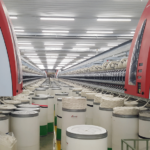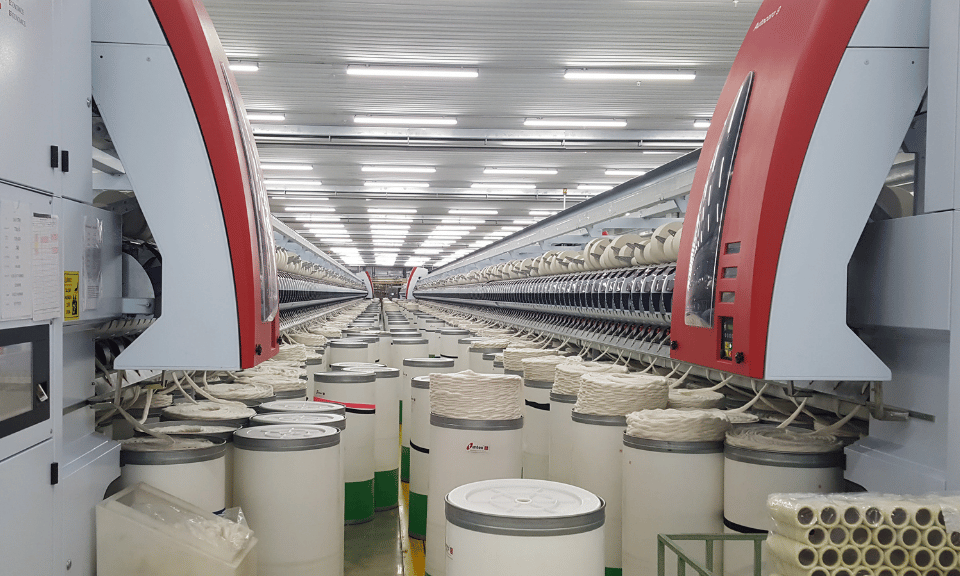
Open-End Yarn Production and the Importance of Air Conditioning
April 12, 2025This post is also available in:
Türkçe (Turkish)
Ring Yarn Production and the Importance of Air Conditioning
Raw Material Preparation
The ring yarn production process begins with the preparation of raw materials, typically cotton or synthetic fibers. These fibers are opened and cleaned in blow room machines. In blow room machines, a constant pressure and airflow are required to mix and clean the fibers homogeneously. The constant pressure in these machines ensures that the fibers are properly opened and cleaned. Filtration systems also play a crucial role in removing dust and other foreign materials.
Carding
After the blow room process, the fibers are processed in carding machines. Carding machines align the fibers parallel and produce fine slivers. During the carding process, maintaining a constant temperature and humidity level is vital. An ideal humidity level of 65-70% is necessary for the proper processing of fibers. Low humidity can cause fibers to break and be improperly processed, while high humidity can cause fibers to stick together. Constant pressure and temperature ensure that the fibers are aligned homogeneously in the carding machines.
Drawing (Draw Frame)
After the carding process, the slivers are processed in draw frame machines. The drawing process involves combining and thinning the slivers to ensure uniformity and consistency. In draw frame machines, maintaining a stable temperature and humidity level is critical for the proper processing of fibers. An ideal drawing environment should have a temperature of 24-26°C and a humidity level of 55-65%. These conditions ensure that the slivers blend smoothly and result in fine, homogeneous slivers.
Combing
After the drawing process, fibers are processed in combing machines for high-quality yarn production. The combing process removes short and unwanted fibers, resulting in longer and higher-quality fibers. In this stage, ambient temperature and humidity are again crucial. A humidity level of 65-70% allows for the proper processing of fibers and the production of quality combed slivers. The combing process enhances the uniformity and strength of the yarn.
Roving
The slivers obtained from the combing process are further refined and slightly twisted in roving machines. In roving machines, a stable temperature and humidity level are also critical for the processing of fibers and the production of quality rovings. The homogeneity and strength of the rovings directly affect the quality of the yarn in the subsequent stages.
Ring Spinning
The rovings are twisted into yarn in ring spinning machines. Ring spinning machines continuously twist fibers at high speeds, enhancing the yarn’s strength and uniformity. In this stage, the ambient temperature and humidity are crucial. An ideal spinning environment should have a temperature of 24-26°C and a humidity level of 55-65%. These conditions minimize potential issues during the processing and twisting of fibers.
Importance of Air Conditioning and Filtration
Throughout these production stages, maintaining a stable temperature and humidity level is critical for production efficiency and product quality. Air conditioning systems control the temperature and humidity in the production environment, ensuring ideal production conditions. Filtration systems remove dust and other foreign particles from the air, ensuring efficient machine operation and product quality. Additionally, these systems improve the health and comfort of workers.
The importance of air conditioning and filtration systems in ring yarn production is evident at every stage of the production process. Ensuring ideal conditions enhances both production efficiency and product quality, providing a competitive advantage in the textile industry.



